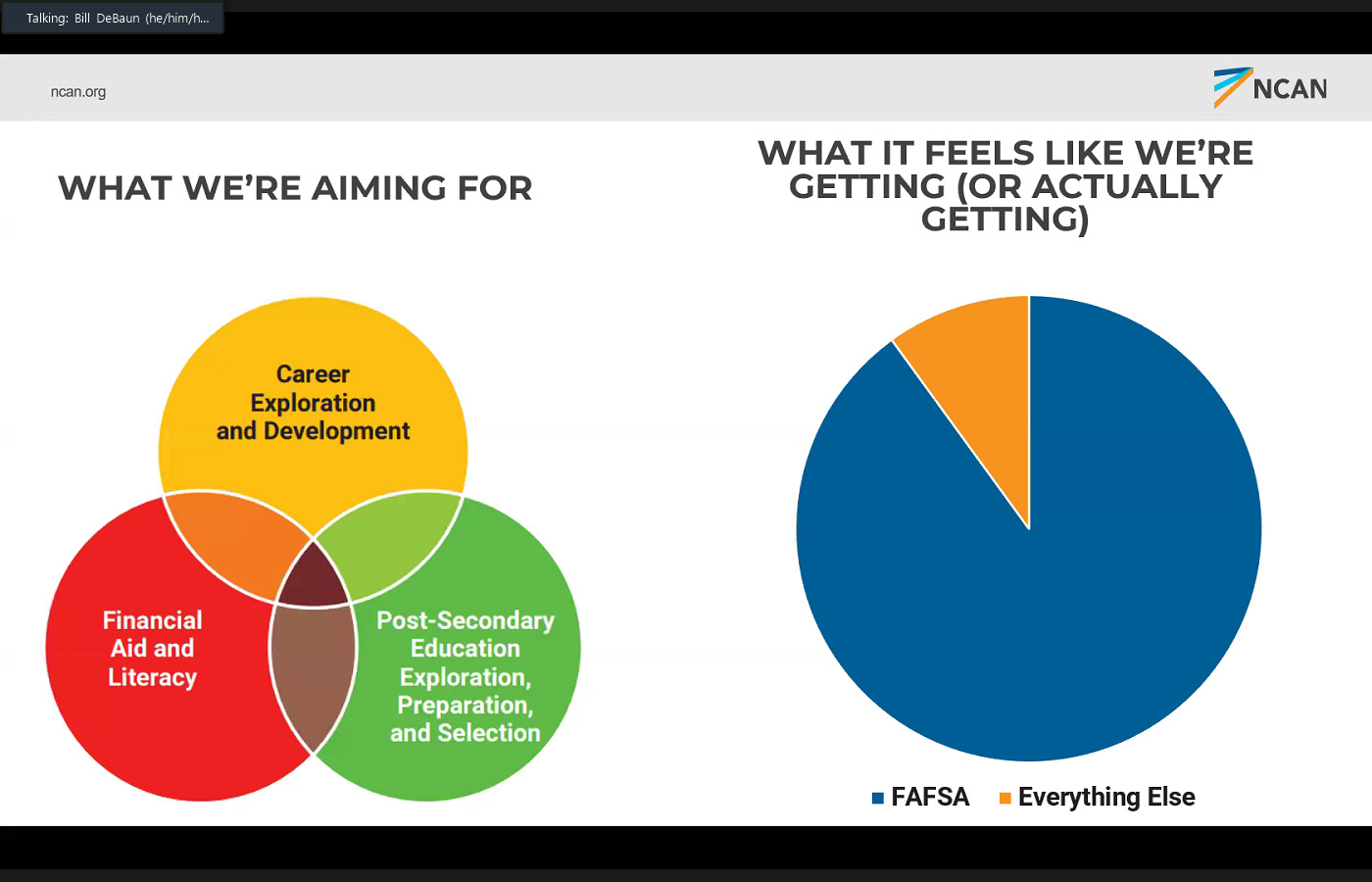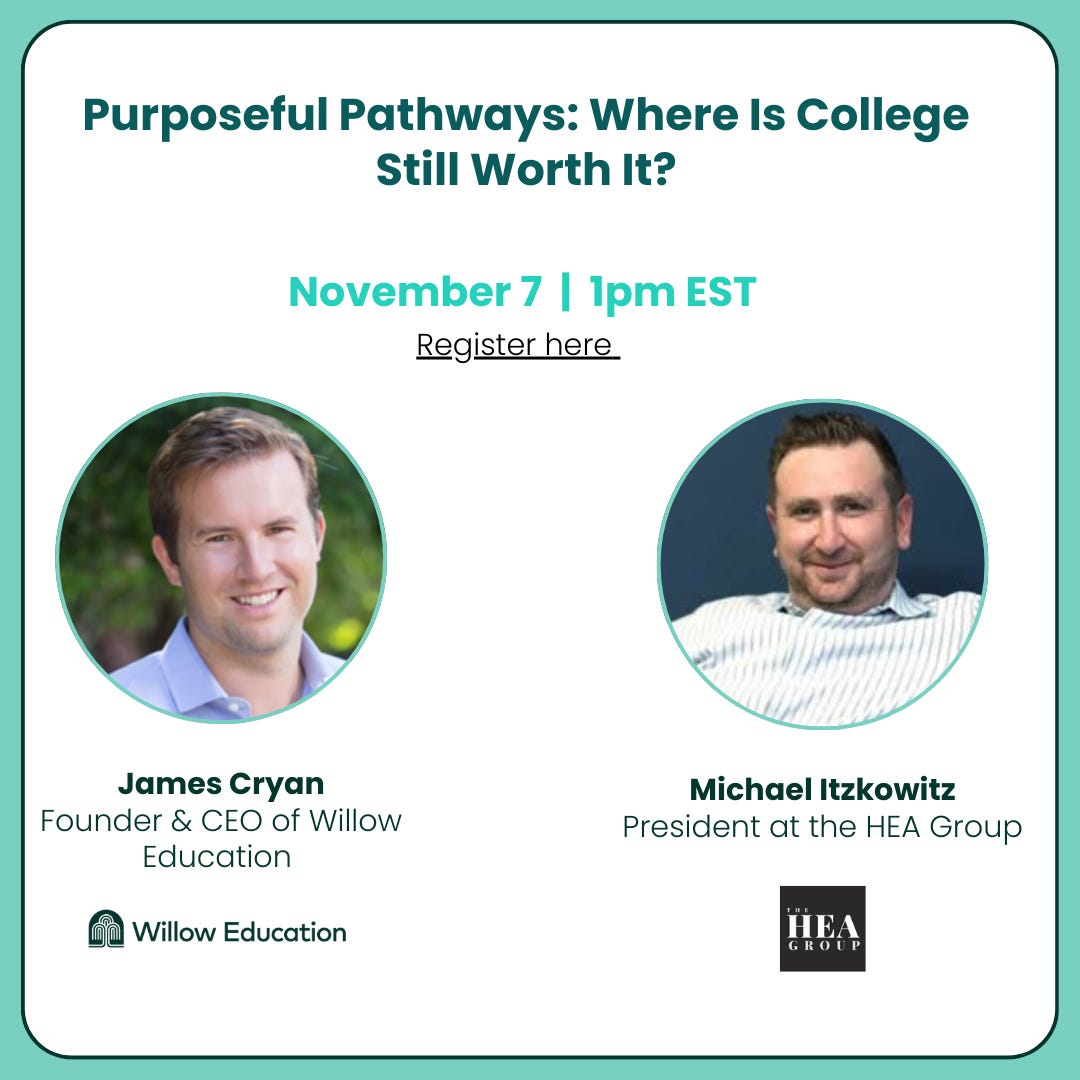Last week, Bill DeBaun from NCAN and I set out to prove that virtual conversations can be informative and fun!
Here are five my takeaways from our conversation:
Canary in the coal mine: 📊 FAFSA completion rates are highly correlated with college enrollment rates. For the Class of 2024, completions are down 9%, signaling lower college enrollment, especially for underserved students.
Billions Left on the Table 💸 In 2023, Pell Grant-eligible high school students missed out on $4 billion in grants by not completing the FAFSA.
It's Not Over Yet (untill June 30, 2025) 🏁 Students can still complete the 2024-25 FAFSA until then. If you have a recent grad in your life that hasn’t completed the FAFSA, it's not too late to qualify!
Get ready now: FAFSA opens December 1, 2024 🗓️ Start preparing with these key strategies:
Focus on FSA ID creation for students and contributors before the Dec launch
Build awareness, get your community excited, and dispel myths
Schedule completion events and invite community partners now
Ensure counselors have access to student-level completion data
🛠️ Check out the new Financial Aid Estimator and "Who Is My Parent?" tools.
My favorite slide: Effective navigation is really hard. Especially last year:
Financial aid, and financial fit is crucial for college access. This month at Willow, we’re building a scholarship recommendation tool (and a simple tracker for counselors) into our platform. We already allow students to personalize their projected ROI for programs of interest by projecting their financial aid through a partnership with TuitionFit. We know that affordability is the crucial component of access, and we’re excited to support our students and partners in that journey.
Article of the month
I read the Government Accountability Office testimony from Sept 24 on the bungled FAFSA rollout last year so that you don’t have to. Some unfortunate, but not surprising, concerning highlights included:
75%: The percentage of calls to the Department of Education's (DOE) call center during the first five months of the rollout that went unanswered.
Delayed Rollout and Technical Problems: The DOE delayed the new FAFSA by 3 months, and technical issues blocked some students from completing the application. These issues contributed to a 9% decline in first-time FAFSA submissions, particularly affecting lower-income students.
Low to No Communication: The Department failed to provide timely updates to both students and colleges regarding delays and changes. For example, students were not informed of processing delays or how to resolve technical issues.
Impact on Financial Aid Offers: Due to delays, some colleges received student records late, which prevented them from issuing financial aid offers on time. As a result, many students had to make decisions about attending college without knowing their full financial aid package.
While this year’s form is delayed again, there are signs of hope with improved testing already happening.
Join our next virtual conversation!
Denver this week!
I’m excited to be in Denver this coming week for the Human Potential Summit, if you’re there or in town, I’d love to reconnect!
Our conversation with Bill sparked my curiosity, so I am learning more about the history and impact of financial aid in our country. I’ll share some of my findings in my next post.
Onward,
James



